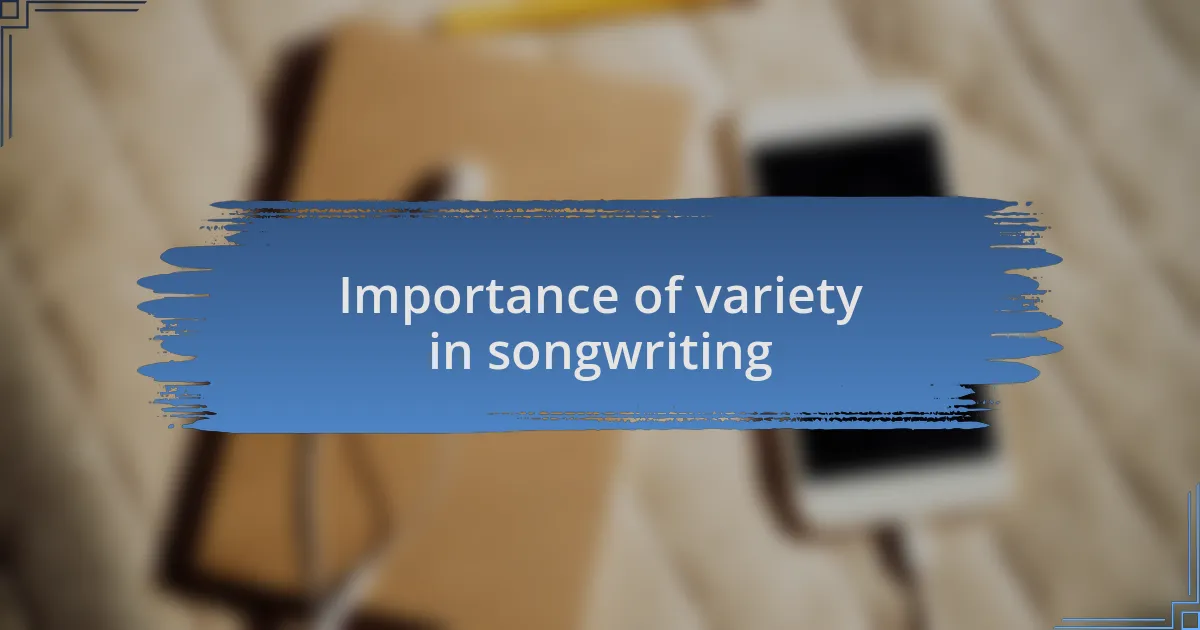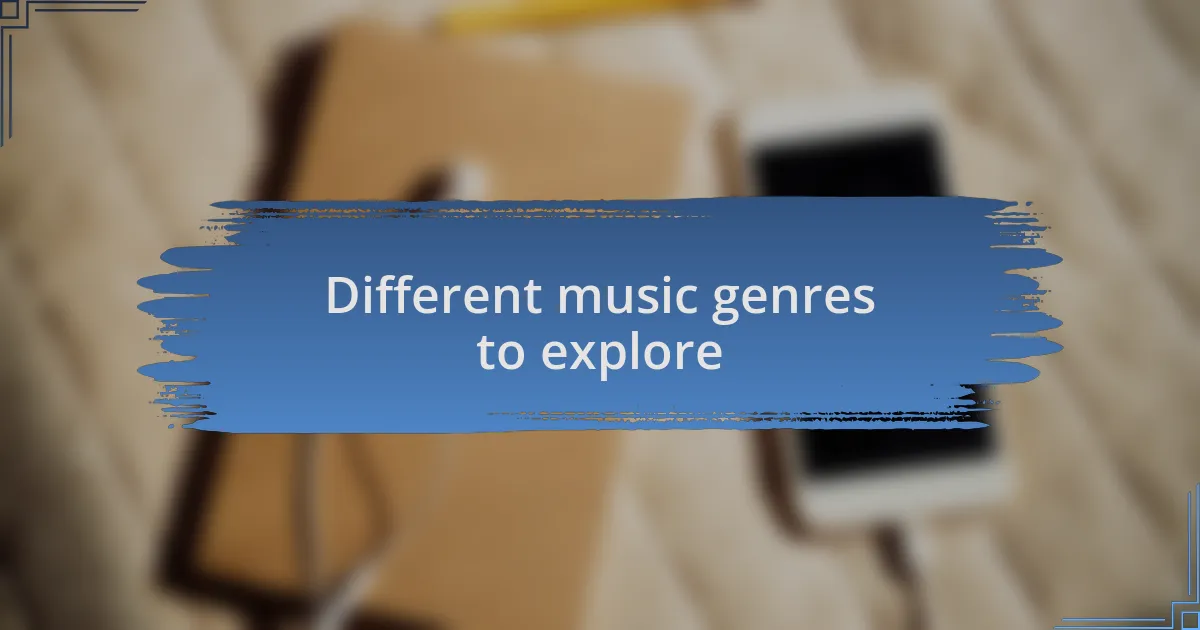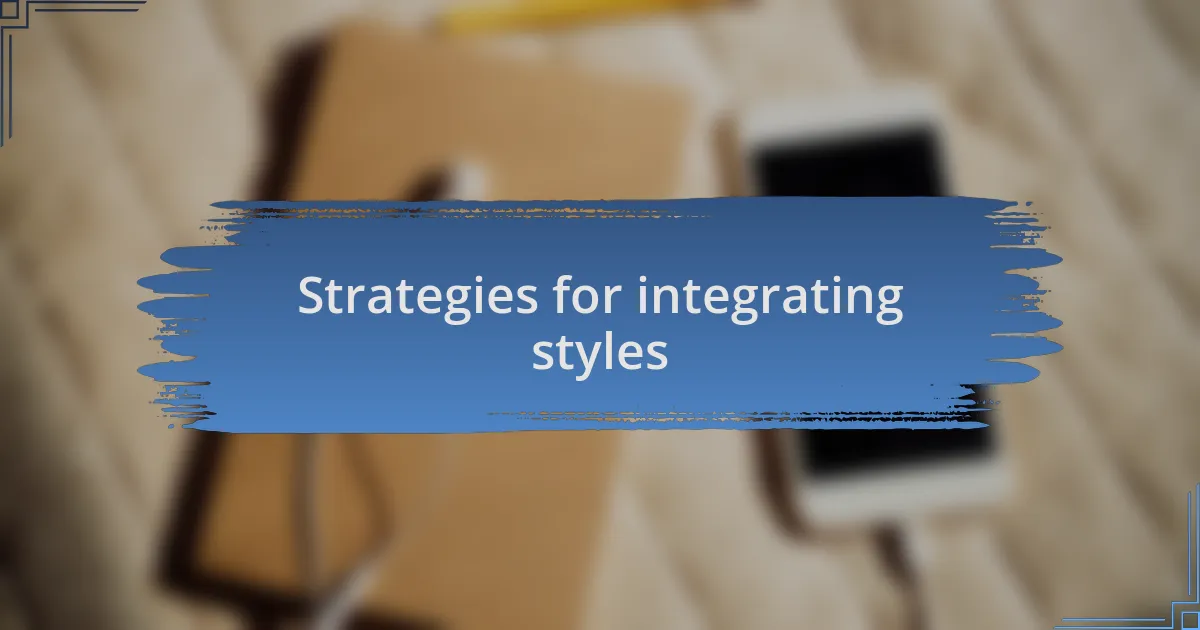Key takeaways:
- Diversity in music fosters emotional connections and enriches artistic expression by blending different genres and cultural influences.
- Collaborations between artists from varying backgrounds can lead to innovative soundscapes and redefine traditional songwriting approaches.
- Challenges such as cultural appropriation and acceptance from traditionalist audiences must be navigated when exploring diverse musical styles.
- Achieving recognition through awards can inspire artists to further embrace diversity, encouraging a broader conversation about the influence of various musical narratives.

Understanding diversity in music
Diversity in music isn’t just about different genres; it’s a tapestry of cultures, emotions, and stories interwoven through sound. I remember the first time I heard a traditional Indian sitar alongside a jazz saxophone. It was a moment that made me realize that music can transcend boundaries and create a language all its own. How often do we miss the beauty of such connections in our daily listening?
As I explored various musical styles, I found myself drawn to the distinct ways each genre expresses human experience. For instance, reggae’s rhythms speak of struggle and resilience, while classical compositions evoke a sense of grandeur and introspection. Have you ever listened to a song and felt an unexpected wave of emotion? That’s the power of diversity in music—it resonates with our shared humanity.
Reflecting on my own songwriting journey, I discovered that incorporating various musical influences deepened my creativity. A small change, like adding a flamenco guitar flourish to a pop song, can turn a simple melody into something unique and evocative. What if we embraced these diverse influences even more in our creative processes? The results could be a thrilling fusion that not only broadens our musical horizons but also introduces audiences to rich cultural narratives.

Importance of variety in songwriting
Variety in songwriting is essential because it breathes life into music. I remember a time when I experimented with blending folk melodies with contemporary pop structures. The amalgamation not only surprised my audience but also taught me that the unexpected can forge deep connections. Have you ever heard a song that made you stop in your tracks because it felt completely fresh and exhilarating?
Embracing different musical styles opens doors to innovation. One of my proudest moments was collaborating with a hip-hop artist while I was rooted in acoustic songwriting. The raw energy of their beats transformed my approach to melody, pushing me into uncharted territory. Isn’t it fascinating how such collaborations can redefine our understanding of what a song can be?
The richness of variety gives texture to songwriting that allows artists to communicate a wider range of human experiences. For example, drawing inspiration from African rhythms added a pulse to a ballad I once wrote, making it resonate with emotions I hadn’t captured before. Can you imagine how much more impactful our music could be if we dared to continuously explore and blend different styles? Each new influence has the potential to enrich our artistry beyond measure.

Different music genres to explore
Different music genres offer a vast landscape for exploration. I vividly recall attending a jazz festival, where I was captivated by the improvisational spirit of the musicians. The way they effortlessly blended complex harmonies with soulful melodies opened my eyes to the beauty of spontaneity in songwriting. Have you ever felt that surge of creativity just by immersing yourself in a genre that’s completely different from your own?
In my own journey, delving into reggae was transformative. The laid-back groove and socially conscious lyrics inspired me to tackle themes I’d never considered before. Writing a song that incorporated the rhythmic offbeat style of reggae allowed my lyrics to flow in a way that felt fresh and liberating. It makes me wonder, what hidden messages could be unlocked by simply stepping outside your comfort zone?
I find electronic music to be astoundingly rich in possibilities. I once experimented with creating a track that combined traditional acoustic instruments with digital sounds. The juxtaposition created a unique soundscape that resonated deeply with listeners. It left me questioning: how often do we let fear of the unknown hold us back from trying something new? Exploring genres like electronic can lead to exhilarating discoveries, pushing the boundaries of what we think music can be.

Strategies for integrating styles
One effective strategy for integrating different music styles is collaboration. I remember teaming up with a hip-hop artist to blend his rhythmic flows with my melodic sensibilities. The process was eye-opening; it showed me how melodies can enhance the drive of a rap verse while maintaining distinct identities. Have you ever considered how collaboration could elevate your own sound?
Another approach is to use unexpected time signatures or scales from various genres in your songwriting. I once wrote a ballad that employed a 5/4 time signature—a nod to progressive rock. This simple shift added a layer of intrigue and made listeners pay closer attention. It led me to wonder: how often do we challenge conventional structures to create something fresh and engaging?
Incorporating diverse instrumentation is also crucial. I experimented with combining classical strings with blues guitar licks in one of my pieces. This fusion created an evocative sound that resonated with my audience on an emotional level. It left me pondering: what new feelings could you evoke by simply adding an unusual instrument to your next song?

Personal experiences with diverse influences
I grew up surrounded by a mix of music—from my mother’s soulful jazz records to my father’s classic rock playlists. This eclectic background shaped my musical palette and pushed me to appreciate different rhythms and melodies. Have you ever found inspiration in the contrasting sounds of your childhood?
Years ago, I attended a world music festival, which opened my eyes to the vibrant, rhythmic beauty of genres I had little exposure to. One performance featured a group that melded African drumming with Caribbean steelpan—a combination I never imagined could exist. Watching the audience connect with this fusion made me realize how powerful diverse influences can be in evoking shared emotions.
In my songwriting journey, I’ve often turned to unexpected sources for inspiration. For example, a trip to India introduced me to the intricate patterns of Indian classical music. I later crafted a song that drew from the raga scale and tried to infuse that complexity into my pop structure. Each note breathed a new life into my writing, leaving me to wonder: how can embracing unfamiliar styles challenge you to grow as a musician?

Challenges faced in songwriting diversity
When embracing songwriting diversity, one challenge that often surfaces is the fear of cultural appropriation. I recall a time I shared a fusion song that incorporated elements from various cultures. This sparked a lively discussion in my circle about respecting the origins of these styles. It made me reflect: how do we find the balance between inspiration and appropriation?
Another hurdle is the technical aspect of melding different genres. In my attempt to experiment with blending country and hip-hop, I found myself grappling with unfamiliar rhythmic structures. The complexity of creating a seamless transition between these two styles can be daunting. Have you ever faced a moment when the music in your head didn’t quite translate to your instrument?
Finally, I’ve noticed that gaining acceptance from traditionalist audiences can be quite challenging. For instance, when I released a song merging classical strings with modern electronic beats, I received mixed reactions. It made me wonder if pushing boundaries was worth the risk of alienating listeners who crave more conventional sounds. How do we stay true to our vision while still connecting with our audience?

Celebrating songwriting awards achievements
Celebrating songwriting awards achievements represents a pinnacle moment for many songwriters, a validation of their hard work and creativity. I remember the exhilaration I felt when I received recognition for a song that drew from various musical influences; it was as if the entire journey of experimentation and self-discovery had finally paid off. Isn’t it heartwarming when your unique voice resonates with others, earning you accolades in return?
The recognition I received not only boosted my confidence but also inspired collaboration with other artists who share a passion for pushing boundaries. I find that winning an award can create a ripple effect, encouraging others to explore and embrace the diverse musical landscape. Have you ever noticed how moments of triumph in one artist’s journey can ignite the spark of ambition in another?
Moreover, celebrating achievements often leads to deeper conversations about diversity in music styles and their influence on songwriting. After winning an award, I had the privilege of discussing my experiences with a broader audience, sharing the importance of embracing different voices and narratives. This exchange of ideas reinforces my belief that every achievement is a collective step forward, isn’t it?